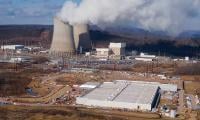Pakistanis have been overwhelmed by the challenges our country faced in 2022. The collapse of economic growth, the corrosion of trust in the country’s institutions, the calamitous climate change induced superfloods, and the absence of any sign of a new political compact to deal with these challenges all combined to create a profound sense of hopelessness and gloom. The good news is that 2022 is almost over. The bad news? The year 2023 will likely be much worse than 2022.
Pakistanis will have to endure profound challenges across three interrelated spheres. The most obvious of these will be the economic distress that is about to be unleashed across the economic spectrum. The challenges posed by inflation and further dramatic corrosion of consumption capability in 2023 will produce significant political damage – to the government, to the key institutions and their reputations and to the elite at large.
Finally, the crises in the political and economic realm will be underscored by the profound implications of the irreversible shifts in Pakistan’s strategic context – manifest in the short run in the shape of unceasing waves of terrorist attacks (by TTP & Daesh, and by separatists in Balochistan), and in the medium term, India’s permanent transition to a geopolitical orbit that will, for the first time since 1947, be beyond the remit of Pakistani influence. Let’s take a closer look at each of these three dimensions.
First, the economy. Gas and electricity prices are unsustainable at their existing rates. The IMF will force the hitherto obdurate Nawaz Sharif-Ishaq Dar combo to raise both gas and electricity prices. Saudi Arabia may yet offer a bridge between now and the inevitable inflationary spiral that will materialise when there is an upward revision of gas, electricity and petrol and diesel too. International fuel prices matter at the macrolevel, but Pakistan faces multiple layers of problems in how pricing for gas, electricity and fuel are set – very low and highly subsidized historical price levels, an unsustainably overvalued Pakistani rupee, and a domestic fiscal profile, including circular debt, that destroys the state’s capacity to spend money.
The Pakistani elite, including and perhaps headlined by the military leadership, will do what it has always done. It will delay decision-making. It will exploit the soft underbelly of the state to score cheap political points. It will keep travelling to Doha, Abu Dhabi, Riyadh and Beijing to seek short-term respite from the accumulating external debt crisis. And it will blame the 7th National Finance Commission Award and the 18th Amendment for the wider unsustainability of the economic system. All these measures will fail to convince creditors and benefactors of the utility of investing in more of the same in Pakistan. Every bureaucrat on the planet – from the Communist Party infrastructure in Beijing, to the MBAs and PhDs working at the IMF, to the thirty-something deputy ministers in Riyadh – knows what Pakistan’s dinosaur decision-makers are capable of, and what they are not.
The primary challenge on the economic front, however, will not be the inability of Ishaq Dar and his age cohort to convince external actors of the potential success of their plans. It will be the domestic pain that Pakistanis will have to endure. Inflation in 2022 devastated household consumption among the poor and almost poor. In 2023, it will tear into the well-being of the urban middle class with a ferocity that cannot be mitigated. Neither the ineffective communications wings of the PML-N or PPP, nor the fifth-generation warfare focused elements of the state will be able to soften the blow.
Efforts to mitigate the impact of economic pain in 2023 will be too little, too late, and too poorly distributed. Any meaningful deployment of the mechanisms of BISP to deliver cash in hand to the poorest and most vulnerable will require at least two payouts of at least Rs15,000 per household. Remember, the Covid-19 payout of Rs12,000 during the late spring, early summer of 2020 under the Ehsaas Emergency Cash was disbursed across 16 million families. In 2023, a pre-Ramazan (early March) payout of Rs15,000 will cost the treasury nearly one quarter of a trillion rupees. A second such payment sometime in July 2023 will cost another quarter trillion rupees. Where will Ishaq Dar manufacture the Rs500 billion required for such social protection measures?
Second, politics. The politics around the economic crisis that Pakistanis will endure in 2023 – even if the government is magically able to produce significant mitigation measures – will be even more complex than the challenges posed to the government and the national security establishment by Imran Khan in 2022. For starters, Khan’s message has already begun to feel stale and hackneyed. Unlike the intergenerational jiyala of the PPP or the economic growth-engaged Noonie in urban Punjab, the Imran Khan supporter is drawn from two demographics, both of which are vulnerable to anti-system diatribes and narratives.
The first is the urban elites and quasi elites that want change, and for whom Khan represented a major shift away from Raiwind and Ghari Khuda Bukhsh. The second is the disaffected young Pakistani – no matter where she or he is from. The first group is electorally insignificant, but constitutes the lion’s share of media, social media and military-adjacent opinion. The second group is much more potent in every way. Pakistan’s pro-system voices (like mine) have increasingly little that they can point to as benefits of investing in or believing in ‘the system’. The mainstream PTI is still very much a system beneficiary and will remain wedded to traditional politics, with Imran Khan being the only real distinctive feature it can offer.
So what alternative will excite people? Luckily, murderous groups like the Lashkar-e-Jhangvi and Tehreek-e-Taliban Pakistan have excluded themselves from serious consideration on Main Street in Pakistan. But the Tehreek-e-Labbaik Pakistan – a juggernaut political brand that is anchored in the wider discrediting of traditional politics and the wider ‘system’ – is perfectly positioned to take advantage of the vacuum that Nawaz Sharif, Asif Ali Zardari and, most of all, Imran Khan are working together to help create. The year 2023 may be one in which the TLP grows even more significant across the urban landscape of the country. Where it fails to grow, other groups will emerge, including renewed popularity for ethnic nationalist groups in urban Sindh, across Khyber Pakhtunkhwa and certainly in both the Baloch and Pakhtun belts of Balochistan.
Finally, the strategic dimension. The economic vulnerability of the average Pakistani, and the growing de-legitimization of traditional politics and the wider Pakistani ‘system’ will act to align perfectly with the agenda of Pakistan’s most profound strategic adversaries. This list is headlined by India, but includes ideological hardliners in Kabul and Kandahar, in Tehran and across the mountainous terrain near the border with Afghanistan where Daesh controls territory.
Pakistan’s unique national identity and ethos survived the first war on terror in part because significant global constituencies (such as the US military-industrial complex) were aligned with and invested in Pakistani victory. China-US competition and early returns from Russia’s invasion of Ukraine all signify a much lower likelihood of Pakistani suffering showing up on the radars that matter globally.
Most terrorist activity in Pakistan is sourced from New Delhi – but the era in which this was a viable argument or narrative, if ever such an era existed, is now over. India’s centrality to American designs in the Indo Pacific is now so deeply entrenched that even a wholesale reversal (impossible to conceive today) would take decades to bring to fruition.
One easy way to understand just how central India is to the economic and technological decoupling taking place across the global supply chain today? Apple and Samsung manufacturing trends. Samsung’s workforce in China has shrunk from a high of more than 60,000 in 2013 to nearly 10,000 in late 2022. It no longer manufactures smartphones in China – shifting most of the bulk of its phone manufacturing to Vietnam and India over the last several years. From zero manufacturing of the Apple iPhone in India in 2017, nearly eight per cent of all iPhones are now manufactured in India. By 2025, it is expected that 25 per cent of all iPhones will be ‘Made in India’.
The spectrum of the best Pakistan can do to strategically counter all this? It lies somewhere between Imran Khan’s Donald Lu fantasy, Foreign Office press releases restating the depth of the seas and height of the mountains with respect to ties with China, and mad scrambles by men in Rawalpindi to try to recreate the faux magic of General Kayani’s infamous memo for the US president.
Happy New Year.
The writer is an analyst and commentator.















